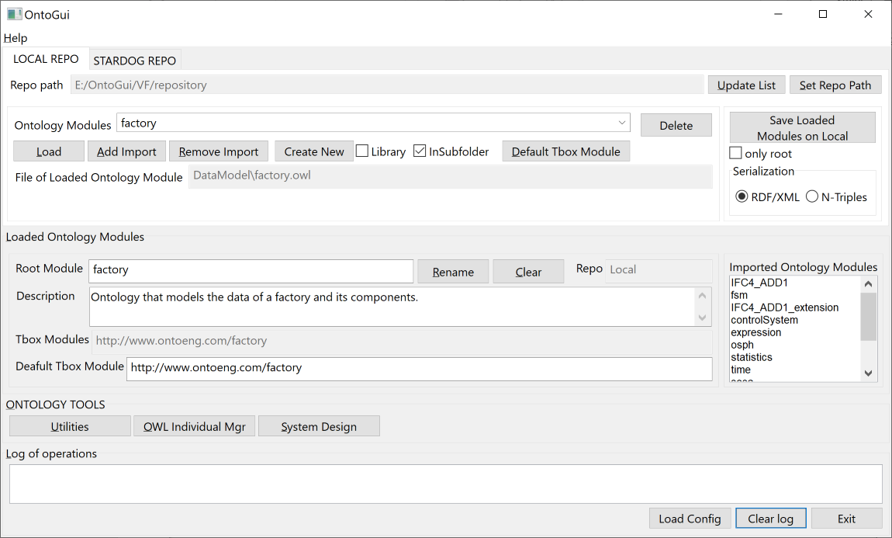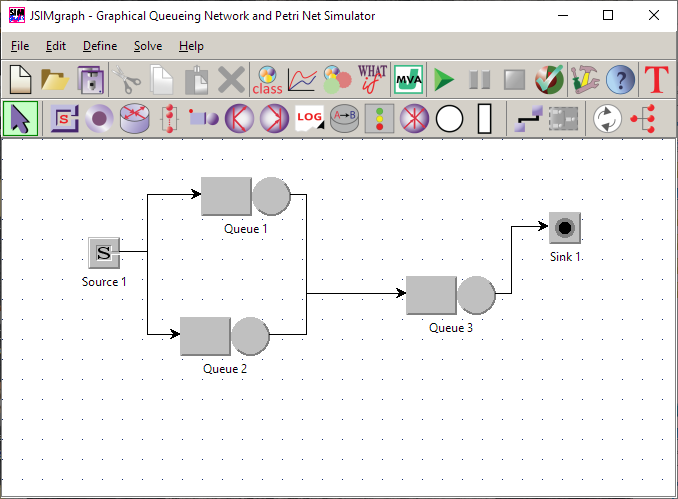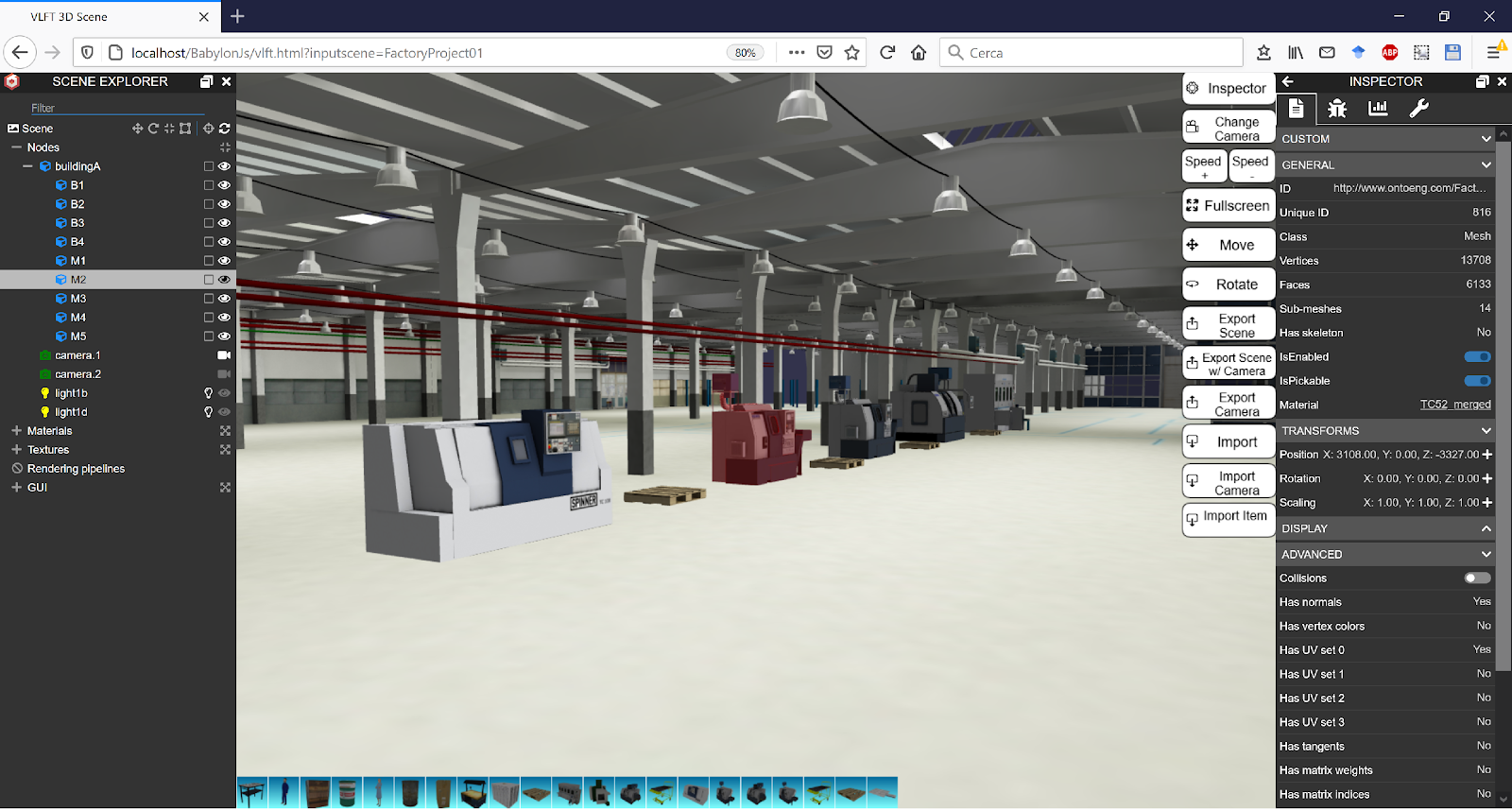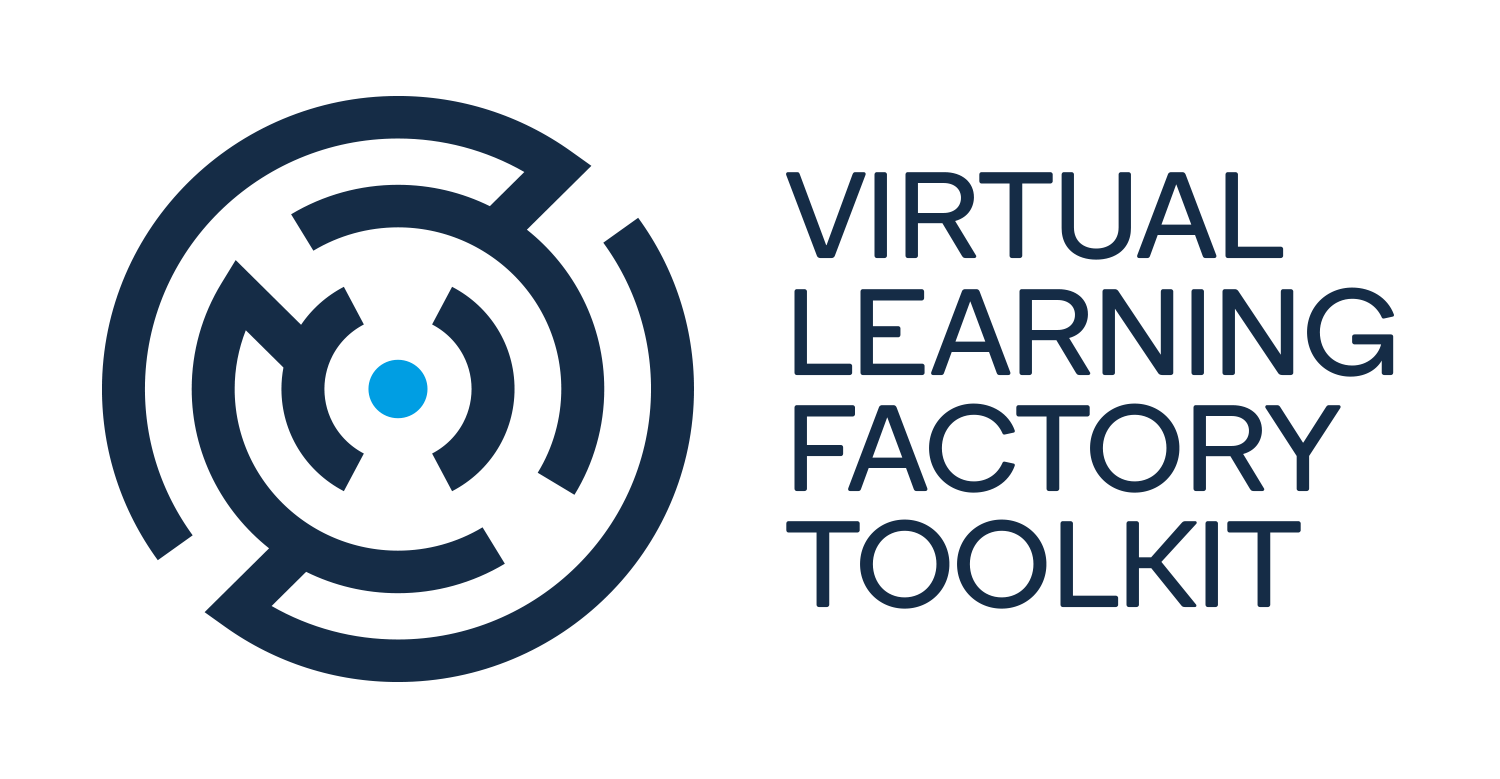Tools
The Virtual Learning Factory (VLF) Tools are digitals tools that can be integrated thanks to the interoperability provided by interacting with the common factory data model. In principle, any digital tool can be included in the VLFT if the following requirements are met:
- The digital tool offers a way to access and modify (if needed) its internal data structures, by means of exchange files or through an application programming interface (API).
- A customized software component (a.k.a. plugin, connector) is developed to import/export data from/to the VLF Knowledge taking in due consideration both the reference factory data model and the specific data model adopted by the digital tool.
The integrated digital tools support various phases along the factory lifecycle, such as production system design, layout design, system performance evaluation and visualization of production system performance. These phases can be sequential or more frequently iterated in loops. VLFT include the following groups of VLF Tools:
- Graphical User Interfaces (GUIs) to access the knowledge base, explore and generate new factory models. GUIs and queries can support the definition and retrieval of production system configurations (i.e. part types, process plans, operations, capabilities of the production resources like machine tools, transporters, storage systems) and also planning and monitoring of manufacturing execution (scheduled production volumes, available resources, key performance indicators (KPI) like throughput, average inventory, average lead time). The prototype tool OntoGui can be used for this purpose.
- Performance evaluation via Discrete Event Simulation. Commercial off the shelf tools and academic tools (e.g. Java Modeling Tools) can be integrated in VLFT by developing plugins that support the automatic generation of simulation models and the automatic retrieval and storage of results to be exploited by other users and applications.
- 3D visualization and interaction with production systems and production resources by means of Virtual and Augmented Reality. These tools support the design, reconfiguration, training and maintenance of production systems and resources. Digital tools based on the libraries babylon.js and ApertusVR are currently available in VLFT.
VLFT user guideline
OntoGui
OntoGui is a software tool providing a graphical user interface to support:
- The fast evaluation of a T-box under development by concurrently instantiating a corresponding A-box, thus implementing a kind of test-driven development approach.
- The generation of RDF data sets to be used as input for other ontology-based applications, without needing customized graphical user interfaces or data converters.
The main window of OntoGui is a Control Panel that can manage (networks of) ontologies. The Control Panel gives also access to ontology tools like OWL Individual Manager and System Design.
 Control Panel of OntoGui
Control Panel of OntoGui
JMT
JMT (Java Modelling Tools) is a suite of applications that offers a comprehensive framework for performance evaluation. Its JSIM module is a discrete-event simulator for the analysis of queueing network models. It is possible to define the model inside the framework (the module JSIMgraph offers a user-friendly graphical interface to describe the model layout and the input parameters).
 Graphical Interface of JSIM module
Graphical Interface of JSIM module
Babylon.js
Babylon.js is a complete JavaScript framework and graphics engine for building 3D applications with HTML5 and WebGL (Web Graphics Library). It is possible to load and draw 3D objects, manage these 3D objects, create and manage special effects, play and manage spatialized sounds, create gameplays and more. Babylon.js library is free to use, thus enabling also didactic use.
A Virtual Factory application based on Babylon.js has been developed to support 3D visualization and interaction with production systems and production resources. In particular, learning workflows related to the (re)configuration of production systems can be supported. The Virtual Factory application takes advantage of default functionalities provided by Babylon.js (e.g. Scene Explorer and Inspector). In addition, customized functionalities were developed to support input/output exchange of .json files defining the content of the 3D scene.
 Graphical Interface of Virtual Factory application
Graphical Interface of Virtual Factory application


